Home>Furniture & Design>Living Room Furniture>How To Fix A Power Recliner
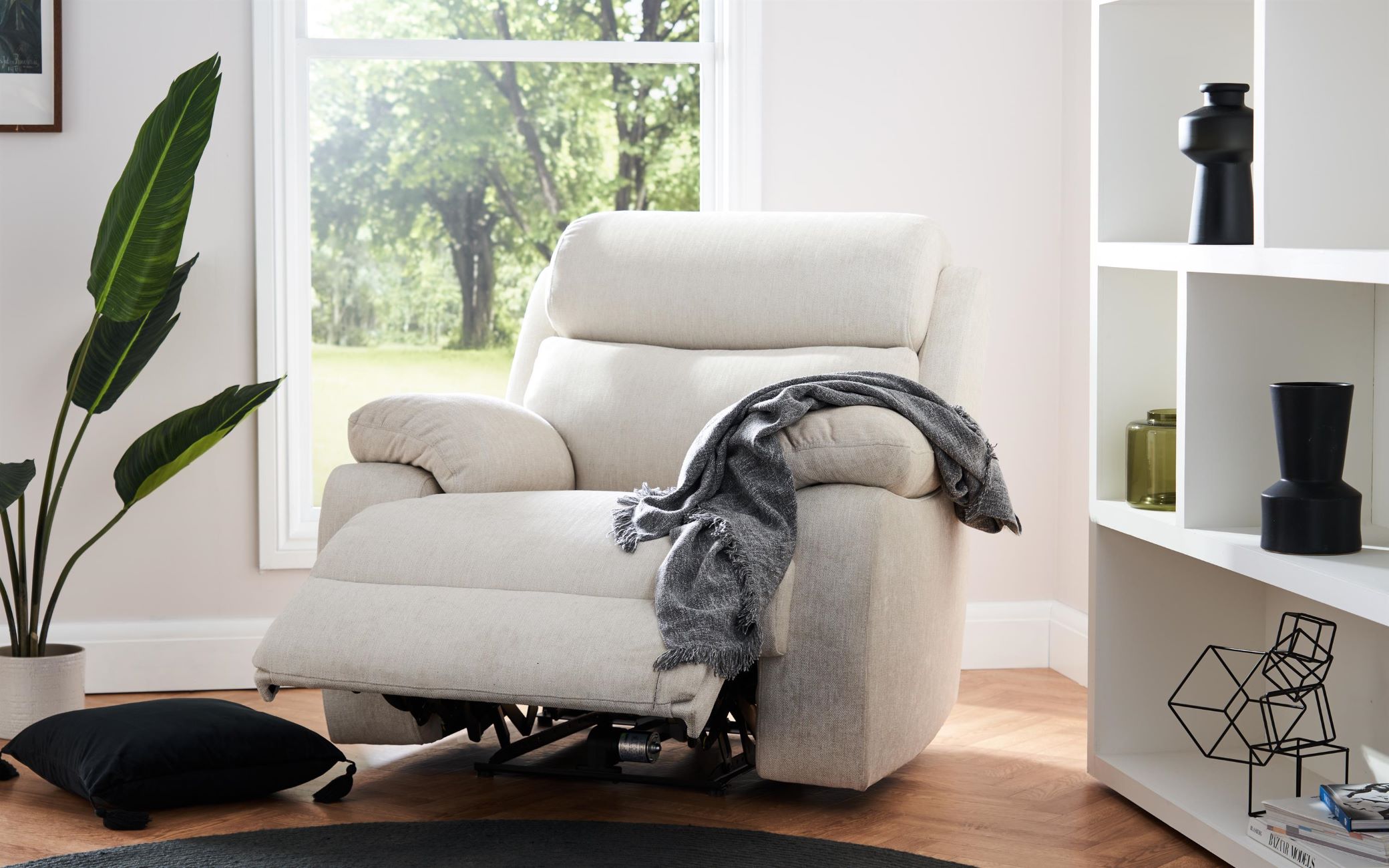

Living Room Furniture
How To Fix A Power Recliner
Modified: February 18, 2024
Learn how to fix a power recliner and get your living room furniture back in action. Follow our step-by-step guide for easy repairs.
(Many of the links in this article redirect to a specific reviewed product. Your purchase of these products through affiliate links helps to generate commission for Storables.com, at no extra cost. Learn more)
Introduction
A power recliner is a luxurious and convenient piece of furniture that offers unparalleled comfort and relaxation. Whether you enjoy kicking back after a long day at work or settling in for a movie night, a power recliner can quickly become a favorite spot in your living room. However, like any electrical appliance, power recliners may encounter issues that affect their functionality. From unresponsive controls to faulty wiring, these problems can disrupt your peaceful moments of repose.
In this comprehensive guide, we will delve into the intricacies of troubleshooting and fixing common issues that may arise with a power recliner. By following the step-by-step instructions and utilizing the necessary tools and materials, you can regain the full functionality of your beloved power recliner without the need for professional assistance.
Whether you are a seasoned DIY enthusiast or a novice in the realm of furniture maintenance, this guide is designed to empower you with the knowledge and confidence to address power recliner issues effectively. From identifying the root cause of the problem to implementing practical solutions, each step is crafted to demystify the repair process and enable you to enjoy the comfort and convenience of your power recliner once more.
So, if you've encountered a malfunctioning power recliner and are eager to restore it to its former glory, join us as we embark on a journey to troubleshoot, repair, and revitalize your cherished piece of living room furniture. Let's roll up our sleeves, gather our tools, and embark on the rewarding endeavor of fixing a power recliner.
Key Takeaways:
- Don’t let a malfunctioning power recliner ruin your relaxation time! By following simple steps like checking the power source and inspecting the wiring, you can troubleshoot and fix common issues on your own.
- Regular maintenance, like lubricating moving parts, can keep your power recliner in top shape. With a little TLC, you can ensure smooth operation and enjoy uninterrupted comfort in your living room.
Read more: How To Fix A Recliner
Tools and Materials Needed
Before embarking on the journey to fix a power recliner, it's essential to gather the necessary tools and materials to ensure a smooth and efficient troubleshooting and repair process. By having these items at your disposal, you can tackle a range of potential issues that may arise with your power recliner. Here's a comprehensive list of tools and materials that you'll need:
Tools:
- Screwdriver Set: A versatile screwdriver set with various head types, including Phillips and flathead, will enable you to disassemble and reassemble different components of the recliner with ease.
- Multimeter: This essential electrical testing tool allows you to measure voltage, current, and resistance, aiding in the diagnosis of electrical issues within the recliner.
- Needle-Nose Pliers: Useful for handling small components and reaching tight spaces during the repair process.
- Wire Strippers: If you encounter wiring issues, wire strippers will assist in safely removing insulation from wires for inspection and repair.
- Lubricant: A high-quality lubricant or silicone spray can be used to lubricate moving parts and mechanisms, ensuring smooth operation of the recliner.
- Electrical Tape: This versatile tape is indispensable for insulating and securing electrical connections.
- Flashlight: A reliable flashlight will aid in illuminating the internal components of the recliner, especially in dimly lit areas.
Materials:
- Replacement Parts: Depending on the identified issue, you may need to acquire specific replacement parts such as fuses, wiring harnesses, or control modules.
- Cleaning Supplies: A soft cloth and mild cleaning solution can be used to clean the exterior and upholstery of the recliner during the repair process.
- Batteries: If the issue pertains to the remote control or power source, having spare batteries on hand can facilitate testing and troubleshooting.
By ensuring that you have these tools and materials readily available, you'll be well-equipped to address a wide array of potential issues that may affect your power recliner. With these resources at your disposal, you can confidently proceed to the next steps of troubleshooting and repairing your power recliner, ultimately restoring it to its optimal functionality for your enjoyment and relaxation.
Step 1: Identify the Issue
Before diving into the repair process, it's crucial to accurately identify the specific issue affecting your power recliner. By conducting a thorough assessment, you can pinpoint the root cause of the malfunction and streamline the troubleshooting process. Here's a detailed breakdown of how to effectively identify the issue:
Read more: How To Fix A Recliner Couch
1. Observational Analysis:
Begin by carefully observing the behavior of the power recliner. Take note of any unusual sounds, erratic movements, or complete lack of response when attempting to operate the reclining mechanism. This initial observation can provide valuable clues regarding the nature of the issue.
2. Remote Control Functionality:
If your power recliner is equipped with a remote control, test its functionality. Ensure that the batteries are operational and properly inserted. Check if the remote control signals are being transmitted effectively to the recliner, as a malfunctioning remote can often mimic issues within the reclining mechanism.
3. Power Supply Examination:
Verify the power source supplying electricity to the recliner. Inspect the power cord for any signs of damage or fraying. Additionally, confirm that the power outlet is functioning correctly by testing it with another electrical device.
4. Visual Inspection:
Carefully examine the exterior of the recliner for any visible damage, loose connections, or exposed wiring. Look for signs of wear and tear, such as worn upholstery or damaged control panels, which may indicate underlying issues.
Read more: How To Fix Recliner Footrest
5. Testing the Reclining Function:
Attempt to operate the reclining mechanism using both the remote control and manual buttons, if available. Take note of any inconsistencies, unresponsiveness, or partial movements exhibited by the recliner during the testing process.
By meticulously assessing these key areas, you can narrow down the potential causes of the malfunction and lay the groundwork for targeted troubleshooting. Identifying the specific issue with precision is the foundational step towards effectively resolving the problem and restoring your power recliner to its optimal functionality.
With a clear understanding of the issue at hand, you can confidently proceed to the subsequent steps, armed with the knowledge needed to address the root cause of the problem and initiate the repair process.
Step 2: Check the Power Source
Ensuring a stable and reliable power source is essential for the proper functioning of a power recliner. Issues related to the power supply can often manifest as unresponsive controls or erratic movements. By meticulously examining the power source, you can eliminate potential electrical disruptions and pave the way for a successful troubleshooting process.
1. Power Cord Inspection:
Begin by inspecting the power cord connected to the power recliner. Check for any visible signs of damage, such as fraying, cuts, or exposed wires. A damaged power cord can compromise the flow of electricity to the recliner, leading to operational issues. If any damage is detected, it is imperative to replace the power cord with a compatible and safe alternative to restore the electrical integrity of the recliner.
2. Outlet Verification:
Next, verify the functionality of the power outlet supplying electricity to the recliner. Plug in another electrical device to the same outlet to confirm that it is operational. If the alternate device functions properly, the power outlet can be ruled out as the source of the problem. However, if the alternate device also fails to operate, it indicates a potential issue with the power outlet, necessitating further inspection or professional assistance to rectify the electrical anomaly.
Read more: How To Fix A Leaning Recliner
3. Power Surge Protection:
Consider the implementation of power surge protection for the power recliner. Utilizing a surge protector can safeguard the recliner from voltage fluctuations and electrical surges, which may occur due to external factors or irregularities in the power supply. Investing in a high-quality surge protector can provide an added layer of defense against electrical disturbances, contributing to the longevity and stability of the power recliner's electrical components.
4. Resetting the Power Source:
In cases where the power recliner exhibits erratic behavior or unresponsiveness, performing a reset of the power source can often resolve transient electrical issues. Unplug the power cord from the outlet and wait for a few minutes before plugging it back in. This simple reset procedure can recalibrate the electrical system of the recliner, potentially alleviating minor disruptions and restoring normal functionality.
By meticulously examining the power source and addressing any identified issues, you can establish a robust electrical foundation for the power recliner. A stable and secure power supply is fundamental to the seamless operation of the recliner's electrical components, ensuring a consistent and reliable reclining experience for years to come.
Step 3: Inspect the Wiring
The wiring within a power recliner serves as the intricate network that facilitates the transmission of electrical signals, enabling the seamless operation of the reclining mechanism and associated components. Issues related to wiring, such as frayed insulation, loose connections, or damaged conductors, can significantly impede the functionality of the recliner. Therefore, conducting a comprehensive inspection of the wiring is paramount in diagnosing and resolving potential electrical anomalies.
1. Visual Examination:
Commence the inspection process by visually examining the wiring harnesses, connectors, and electrical conduits within the power recliner. Look for any signs of wear, damage, or irregularities along the length of the wiring. Pay close attention to areas where the wiring bends or flexes, as these regions are susceptible to wear and stress over time. Additionally, inspect the wiring for any exposed conductors or evidence of abrasion, which may compromise the integrity of the electrical pathways.
Read more: How To Fix A Recliner Handle
2. Connectivity Assessment:
Verify the connectivity of the wiring by ensuring that all connectors and terminals are securely fastened. Loose or detached connections can disrupt the flow of electrical signals, leading to erratic behavior or complete malfunction of the recliner. Gently tug on the connectors to check for any signs of looseness or instability. If any discrepancies are detected, reseat the connectors firmly to establish a reliable electrical interface.
3. Insulation Integrity:
Evaluate the insulation integrity of the wiring to safeguard against potential short circuits or electrical hazards. Insulation damage, such as cracks, tears, or punctures, can expose the conductive elements within the wiring, posing a risk of electrical malfunction or safety hazards. Carefully inspect the insulation along the entire length of the wiring, ensuring that it remains intact and free from any compromising defects.
4. Continuity Testing:
Utilize a multimeter to perform continuity testing on the wiring harnesses and conductors. This diagnostic procedure helps identify any breaks or discontinuities within the wiring, providing insights into potential areas of concern. By probing the wiring and assessing the continuity readings, you can pinpoint any interruptions in the electrical pathways, guiding targeted repair efforts to restore the integrity of the wiring system.
5. Professional Evaluation:
In cases where intricate wiring issues are encountered or the inspection reveals complex electrical anomalies, seeking professional evaluation from a qualified technician or electrician is advisable. Professional expertise can offer in-depth insights into intricate wiring systems, ensuring comprehensive diagnosis and precise resolution of underlying electrical issues.
By meticulously inspecting the wiring and addressing any identified concerns, you can fortify the electrical infrastructure of the power recliner, mitigating the risk of electrical malfunctions and enhancing the overall reliability of the reclining mechanism. A thorough assessment of the wiring lays the groundwork for targeted repairs, fostering a safe and efficient electrical environment within the power recliner.
Read more: How To Fix Recliner Mechanism
Step 4: Examine the Remote Control
The remote control of a power recliner serves as the gateway to effortless and personalized reclining experiences. However, when issues arise with the remote control, such as unresponsive buttons or erratic behavior, it can significantly impede the convenience and functionality of the recliner. Therefore, conducting a thorough examination of the remote control is essential to diagnose and address potential issues effectively.
1. Battery Assessment:
Initiate the examination process by inspecting the batteries within the remote control. Verify that the batteries are operational and properly inserted, ensuring a consistent power supply to the remote control unit. If the batteries are depleted or exhibiting signs of corrosion, replace them with fresh, high-quality batteries to restore the optimal functionality of the remote control.
2. Signal Transmission:
Test the signal transmission capabilities of the remote control by aiming it towards the recliner and pressing the various buttons. Observe the response of the recliner to the transmitted signals, noting any delays or inconsistencies in the execution of commands. Additionally, ensure that there are no obstructions hindering the line of sight between the remote control and the recliner, as obstacles can impede signal transmission.
3. Button Functionality:
Carefully assess the functionality of each button on the remote control. Press each button systematically and observe the corresponding response from the recliner. Look for any buttons that exhibit irregular behavior, such as requiring excessive force to actuate or failing to register commands. Identifying faulty buttons enables targeted troubleshooting and potential repair or replacement of the remote control unit.
Read more: How To Fix Recliner Cable
4. Cleaning and Maintenance:
Perform a thorough cleaning of the remote control to remove any accumulated debris, dust, or residue that may impede its functionality. Use a soft, lint-free cloth lightly dampened with a mild cleaning solution to gently wipe the exterior and buttons of the remote control. Pay particular attention to the button contacts and infrared transmitter to ensure unimpeded signal transmission and responsiveness.
5. Remote Control Replacement:
If persistent issues are encountered with the remote control, despite thorough examination and maintenance, consider the possibility of replacing the remote control unit. Acquire a compatible replacement remote control from the manufacturer or authorized dealers to seamlessly integrate with the recliner, restoring effortless control and personalized reclining experiences.
By meticulously examining the remote control and addressing any identified concerns, you can optimize the functionality and reliability of this essential component, ensuring seamless interaction with the power recliner. A well-maintained and responsive remote control enhances the overall user experience, enabling effortless customization of reclining positions and intuitive control of the recliner's features.
Step 5: Check the Reclining Mechanism
The reclining mechanism is the heart of a power recliner, responsible for facilitating seamless adjustments and providing personalized comfort. When issues arise within the reclining mechanism, such as uneven movement, unresponsiveness, or unusual noises, it can significantly detract from the overall reclining experience. Therefore, conducting a comprehensive assessment of the reclining mechanism is crucial to diagnose and rectify potential issues effectively.
1. Visual Inspection:
Initiate the examination by visually inspecting the external components of the reclining mechanism. Check for any visible signs of misalignment, obstruction, or damage to the moving parts, including the reclining motor, gears, and linkages. Additionally, examine the upholstery and padding around the reclining mechanism for any irregularities that may impede smooth operation.
Read more: How To Fix A Electric Recliner
2. Motor Functionality:
Test the functionality of the reclining motor by activating the reclining controls and observing the corresponding movements. Pay close attention to the smoothness and consistency of the reclining motion, noting any jerky or uneven adjustments. Additionally, listen for any abnormal sounds emanating from the motor, as unusual noises can indicate underlying mechanical issues.
3. Frame and Support Evaluation:
Assess the structural integrity of the recliner's frame and support components. Ensure that the frame is free from cracks, warping, or excessive flexing during reclining movements. Verify the stability of the support structure, including the footrest and backrest, to confirm that they operate in unison without wobbling or instability.
4. Lubrication and Maintenance:
Apply a high-quality lubricant specifically designed for mechanical components to the moving parts of the reclining mechanism. Focus on lubricating pivot points, hinges, and sliding surfaces to reduce friction and promote smooth operation. Regular maintenance through lubrication can prolong the lifespan of the reclining mechanism and minimize wear on critical components.
5. Professional Assessment:
In cases where intricate mechanical issues are encountered or the examination reveals complex anomalies within the reclining mechanism, seeking professional assessment from a qualified technician or furniture specialist is advisable. Professional expertise can offer in-depth insights into the mechanical intricacies of the recliner, ensuring comprehensive diagnosis and precise resolution of underlying mechanical issues.
By meticulously examining the reclining mechanism and addressing any identified concerns, you can optimize the functionality and reliability of this pivotal component, ensuring a seamless and personalized reclining experience. A well-maintained and responsive reclining mechanism enhances the overall comfort and usability of the power recliner, elevating the enjoyment of leisure and relaxation in the living room.
Read more: How To Fix A Recliner Footrest
Step 6: Lubricate Moving Parts
Lubricating the moving parts of a power recliner is a critical maintenance task that can significantly enhance the overall functionality and longevity of the reclining mechanism. Over time, the continuous operation of the recliner's moving components can lead to friction and wear, potentially resulting in diminished performance and increased stress on the mechanical elements. By applying a suitable lubricant to the moving parts, you can mitigate these issues and ensure smooth, effortless operation of the recliner.
Importance of Lubrication
The application of lubricant serves multiple essential purposes within the reclining mechanism. Firstly, it reduces friction between moving components, such as pivot points, hinges, and sliding surfaces, thereby minimizing wear and preventing premature deterioration. Additionally, lubrication helps to displace moisture and contaminants that may accumulate within the moving parts, safeguarding against corrosion and maintaining the structural integrity of the recliner.
Selecting the Right Lubricant
Choosing the appropriate lubricant is crucial to achieving optimal results. For power recliners, a high-quality silicone-based lubricant is often recommended due to its compatibility with various materials and its ability to provide long-lasting lubrication. Silicone lubricants offer excellent resistance to temperature extremes and provide a smooth, non-greasy film that promotes friction reduction without attracting dust or debris.
Application Process
Commence the lubrication process by identifying the key moving parts of the reclining mechanism that would benefit from lubrication. These may include pivot points, hinges, tracks, and any other components involved in the reclining and extension functions. Carefully apply a moderate amount of the silicone lubricant to each designated area, ensuring even coverage without excess accumulation.
Read more: How To Fix Loose Arm On Recliner
Distributing the Lubricant
After applying the lubricant, manually actuate the reclining mechanism through its full range of motion several times. This action helps distribute the lubricant evenly across the moving parts, allowing it to penetrate and coat the surfaces effectively. By exercising the recliner, the lubricant permeates the critical areas, reducing friction and promoting seamless operation.
Regular Maintenance
Incorporating lubrication of the moving parts into a regular maintenance schedule is essential for preserving the optimal performance of the power recliner. Periodic application of lubricant, typically every six months or as recommended by the manufacturer, ensures that the moving components remain well-protected and operate smoothly, contributing to the longevity of the recliner.
By meticulously lubricating the moving parts of the power recliner, you can uphold the efficiency and reliability of the reclining mechanism, fostering a comfortable and enjoyable reclining experience for years to come. This simple yet impactful maintenance task plays a pivotal role in preserving the functionality and structural integrity of the power recliner, enriching the leisure and relaxation it provides in the living room.
Step 7: Test the Recliner
After meticulously addressing potential issues and performing maintenance tasks, it's crucial to conduct a comprehensive testing phase to evaluate the effectiveness of the troubleshooting and repair efforts. Testing the recliner allows you to validate the functionality of the components, ensure seamless operation, and confirm that the identified issues have been successfully resolved.
Testing Procedure
-
Operational Checks: Begin by testing the basic operational functions of the recliner. Utilize the remote control and manual buttons, if available, to initiate reclining and extension movements. Observe the responsiveness and smoothness of the recliner's motions, ensuring that the adjustments are consistent and free from any irregularities.
-
Positioning Verification: Test the recliner's ability to assume various positions, including upright, reclined, and extended configurations. Confirm that the recliner transitions between these positions seamlessly, providing the desired levels of comfort and support without encountering any hindrances or abrupt stops.
-
Remote Control Validation: Verify the responsiveness and accuracy of the remote control commands by executing a series of reclining adjustments. Ensure that each button on the remote control elicits the intended recliner response, allowing for effortless customization of the reclining positions and features.
-
Noise Assessment: Listen for any abnormal sounds or vibrations during the reclining movements. A well-functioning recliner should operate quietly, without producing excessive noise or exhibiting signs of mechanical strain. Any unusual noises should be investigated further to identify potential underlying issues.
-
Comfort Evaluation: Sit in the recliner and assess the overall comfort and support provided in each reclining position. Pay attention to the ergonomics, padding, and lumbar support to ensure that the recliner delivers the expected level of relaxation and comfort without discomfort or strain.
Read more: How To Fix Recliner Chair Lever
Iterative Adjustments
During the testing phase, it's essential to remain attentive to any unexpected behaviors or performance deviations. If issues persist or new concerns arise, revisit the previous steps to conduct targeted adjustments and further diagnostic evaluations. Iterative testing and refinement of the recliner's functionality are instrumental in achieving optimal performance and user satisfaction.
Final Validation
Upon completing the testing and potential adjustments, validate the overall functionality and performance of the recliner. Confirm that all identified issues have been effectively resolved and that the recliner operates seamlessly, meeting the desired standards of comfort, reliability, and convenience.
By conducting a thorough and methodical testing process, you can ensure that the power recliner has been successfully restored to its optimal functionality, ready to provide unparalleled comfort and relaxation in your living room. The testing phase serves as the final checkpoint, affirming the efficacy of the troubleshooting and repair endeavors and setting the stage for uninterrupted enjoyment of the rejuvenated power recliner.
Conclusion
In conclusion, the journey to fix a power recliner encompasses a series of meticulous steps aimed at diagnosing, addressing, and optimizing the functionality of this essential piece of living room furniture. By embarking on this endeavor, you have delved into the intricacies of troubleshooting and repair, equipped with the knowledge and tools to overcome common issues that may arise with a power recliner.
Throughout this comprehensive guide, you have navigated through the critical tasks of identifying the root cause of the malfunction, examining the power source and wiring, assessing the remote control and reclining mechanism, and performing essential maintenance through lubrication. Each step was designed to empower you with the expertise and confidence to restore the optimal functionality of your power recliner, ensuring that it continues to provide unparalleled comfort and relaxation in your living space.
As you meticulously inspected the power source, wiring, and remote control, you gained valuable insights into the intricate electrical and operational aspects of the recliner. By addressing potential issues and performing targeted maintenance, you have fortified the foundation of the recliner, mitigating the risk of malfunctions and enhancing its overall reliability.
Furthermore, the examination of the reclining mechanism and the application of lubrication underscored the significance of mechanical integrity and proactive maintenance in preserving the seamless operation of the power recliner. By attending to these critical components, you have contributed to the longevity and performance of the recliner, ensuring that it remains a cherished and functional centerpiece of your living room.
The testing phase served as the ultimate validation of your efforts, allowing you to confirm the successful resolution of identified issues and the seamless operation of the rejuvenated power recliner. Through iterative adjustments and attentive evaluation, you have fine-tuned the recliner to deliver the expected levels of comfort, reliability, and convenience, culminating in a rejuvenated and revitalized living room essential.
As you conclude this journey, you stand as a capable and knowledgeable steward of power recliner maintenance, equipped with the skills to address potential issues and optimize the functionality of this beloved piece of furniture. By embracing the principles of proactive maintenance and targeted troubleshooting, you have ensured that your power recliner continues to be a source of comfort and relaxation, enriching your living space for years to come.
Frequently Asked Questions about How To Fix A Power Recliner
Was this page helpful?
At Storables.com, we guarantee accurate and reliable information. Our content, validated by Expert Board Contributors, is crafted following stringent Editorial Policies. We're committed to providing you with well-researched, expert-backed insights for all your informational needs.
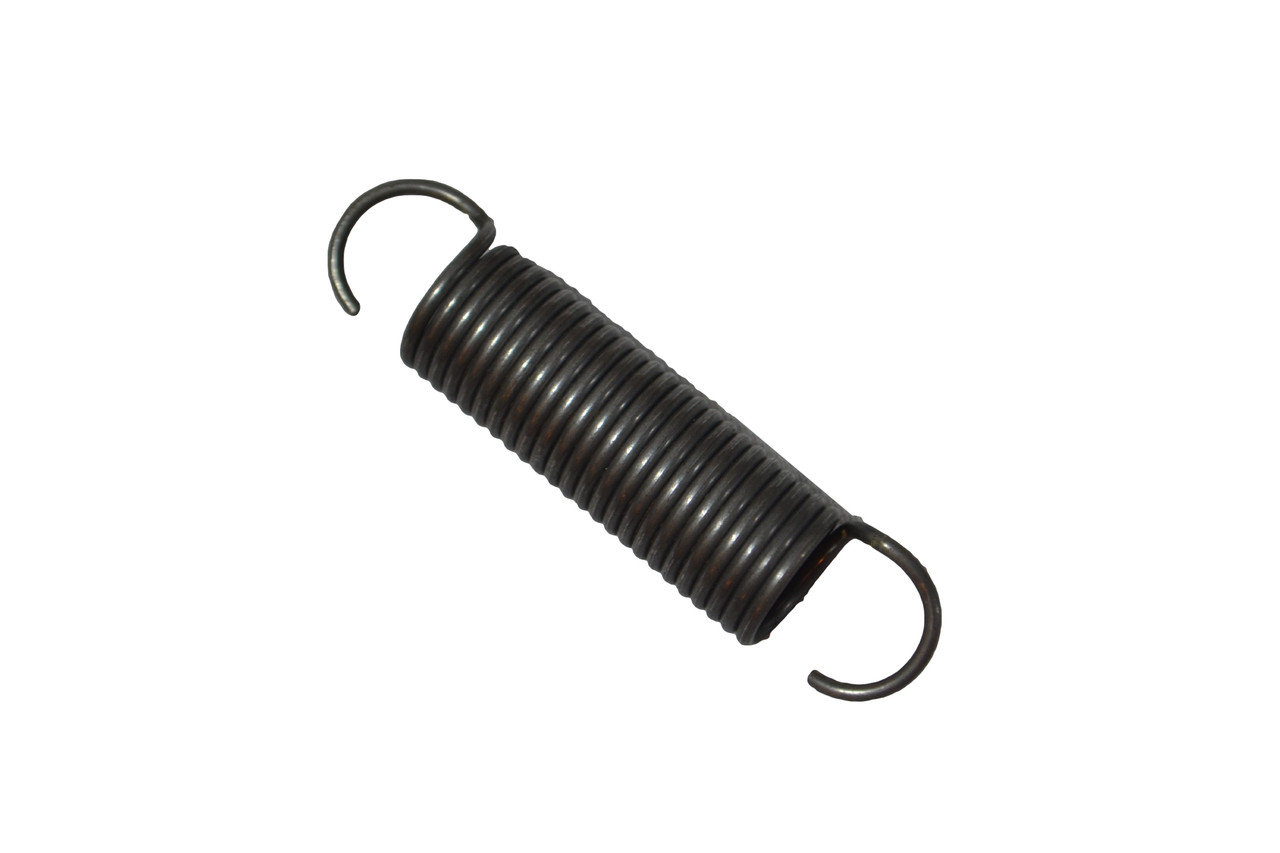
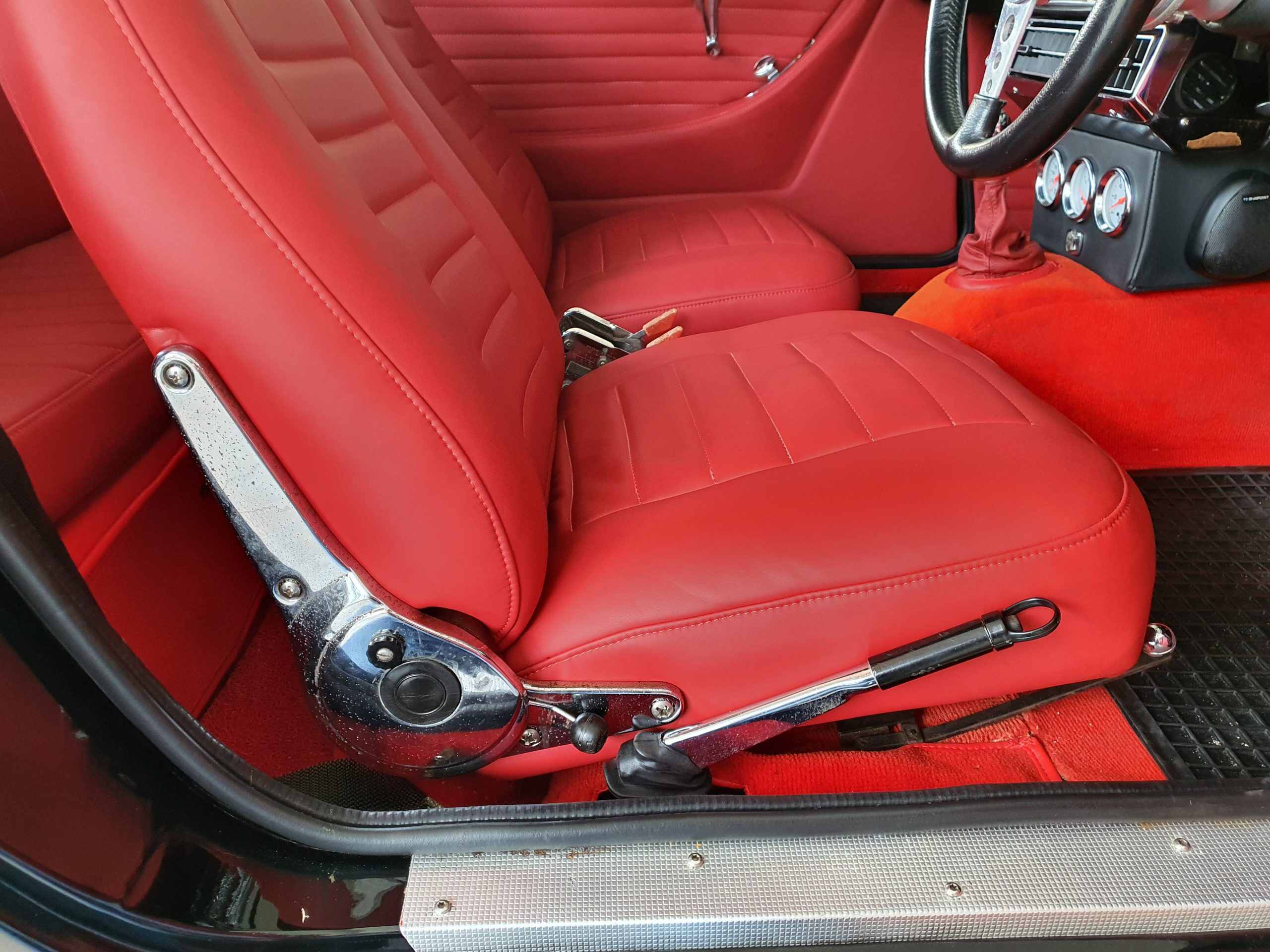
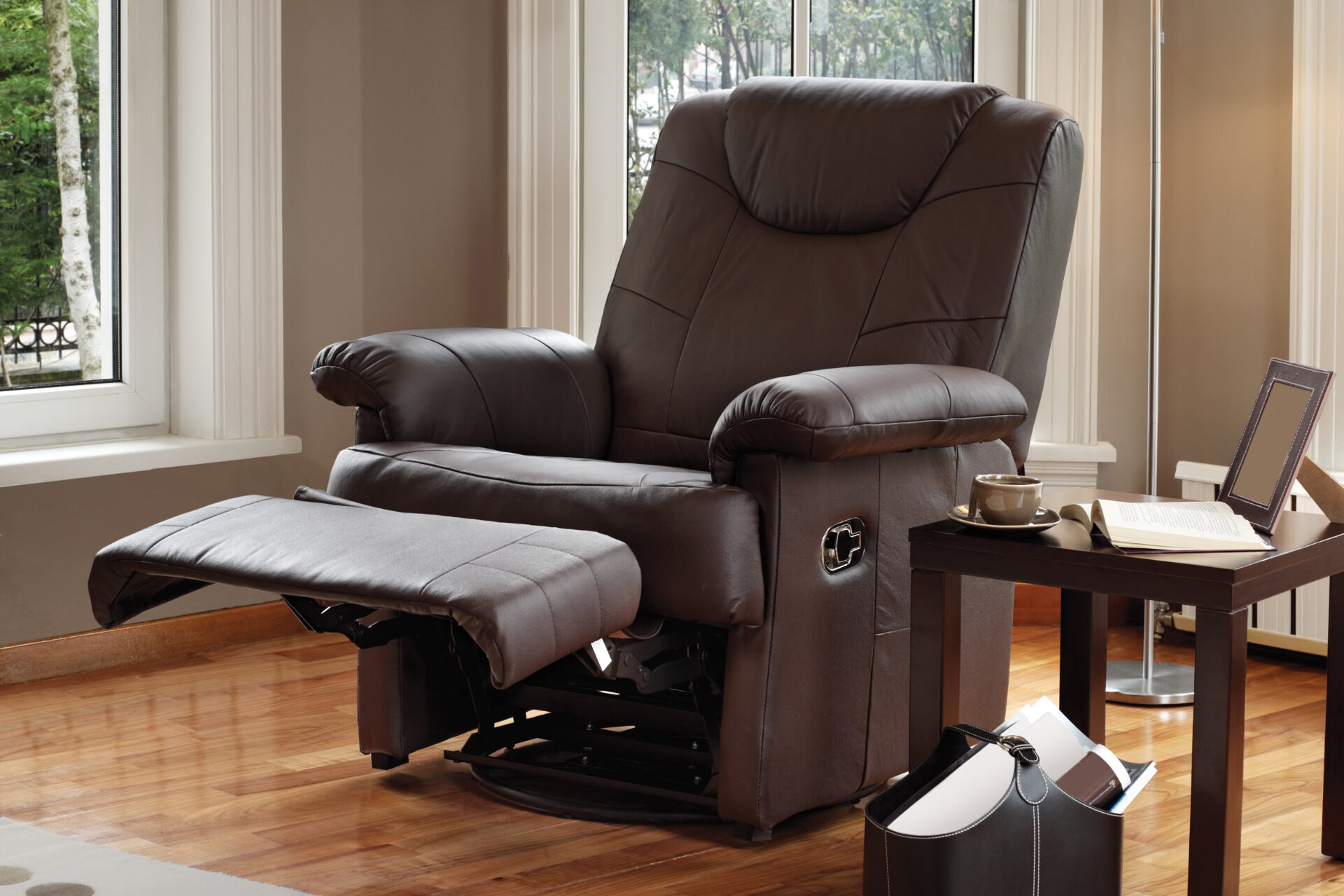
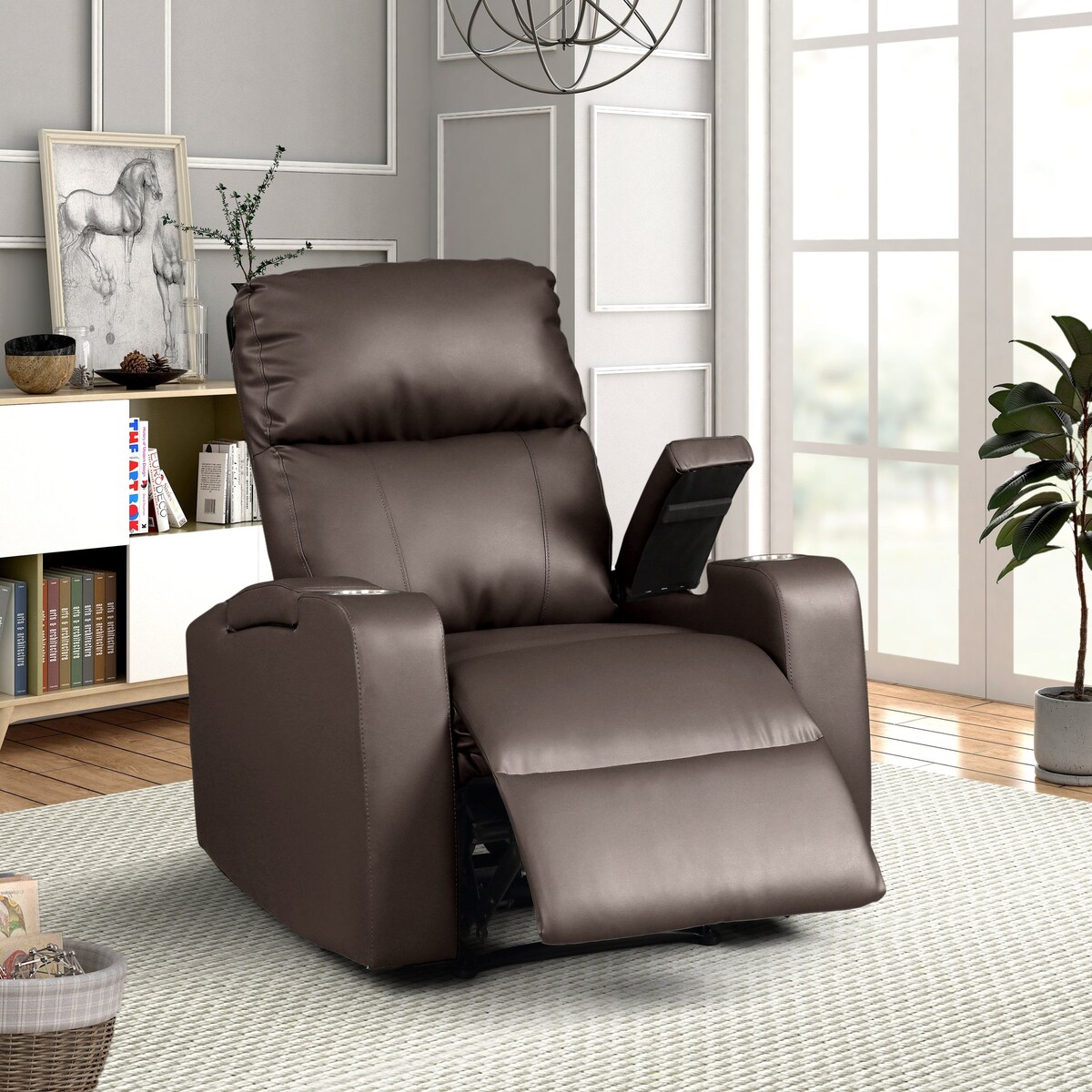
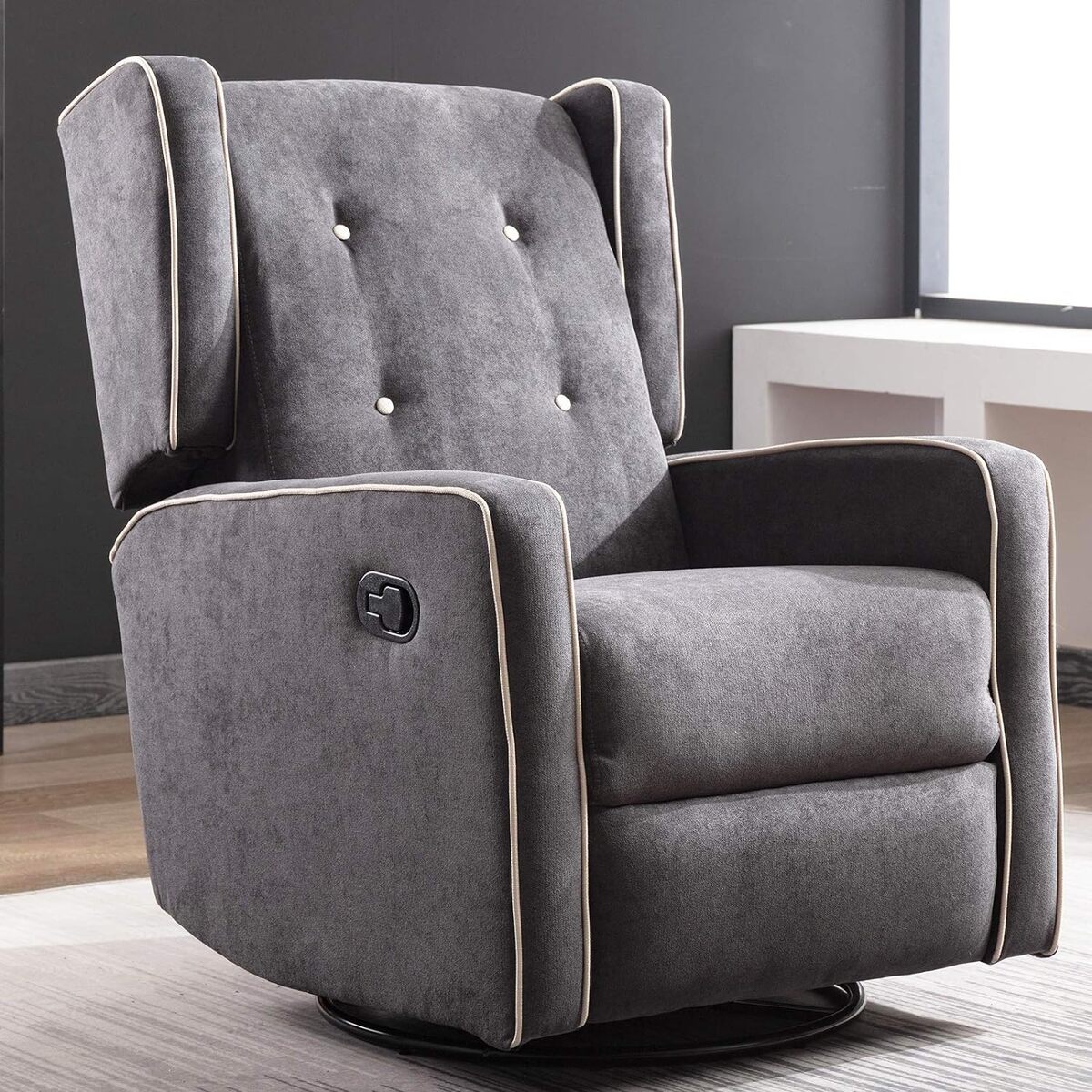

0 thoughts on “How To Fix A Power Recliner”